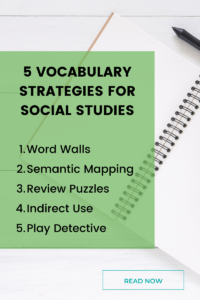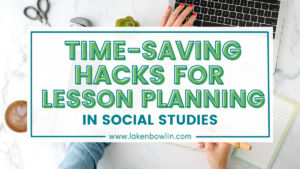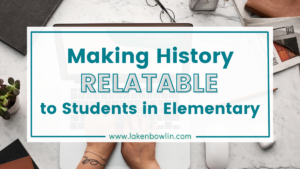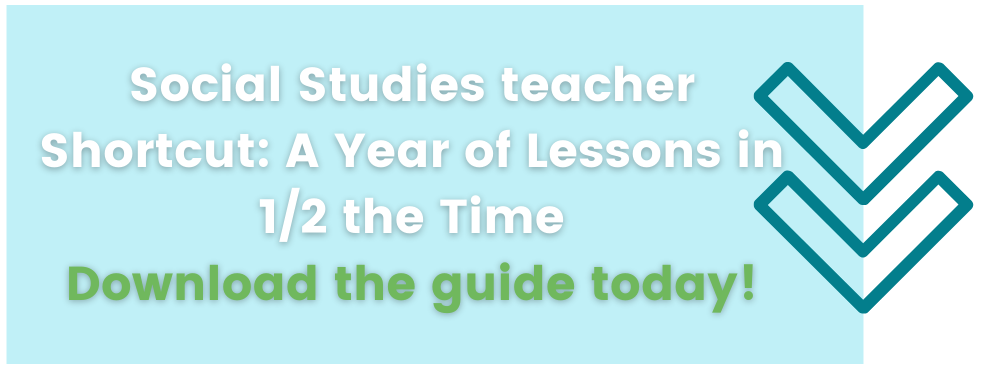 Honestly, when I think about social studies, my mind goes straight to understanding vocabulary. Teaching social studies vocabulary is a top priority in my classroom. Yes, there’s a lot more to the subject, but students definitely need to keep track of a lot of vocabulary as we make our way through lessons. Students need the vocabulary to understand the key events and truly understand what is happening. Having this understanding will help bring your social studies lessons to life!
Honestly, when I think about social studies, my mind goes straight to understanding vocabulary. Teaching social studies vocabulary is a top priority in my classroom. Yes, there’s a lot more to the subject, but students definitely need to keep track of a lot of vocabulary as we make our way through lessons. Students need the vocabulary to understand the key events and truly understand what is happening. Having this understanding will help bring your social studies lessons to life!
Are you looking for planning resources that are easy to use, minimal prep, and ready at your fingertips? I have created a planning document for upper-elementary social studies teachers, and you are definitely going to want to go check it out! 👀 I have pacing, linked resource ideas, vocabulary, and essential questions ready to go for you. If you teach in the upper elementary classroom, there is something for you in that document. What are you waiting for? Go check it out HERE!
Planning out vocabulary instruction can get redundant, and it is always nice to switch things up to keep students engaged! I’ve created 5 strategies for helping you when you are teaching social studies vocabulary words.
1. Word Walls for Social Studies Vocabulary
This is a classic for a reason. Keeping the vocabulary terms in sight is a great way to remind students to use them. It’s a creative way to make classroom decor. Students can “right brain” their vocab by making pictorial associations before adding to the wall.
2. Semantic Mapping Vocabulary Words
Perfect for showing students how different terms work together, like if you’re studying government or geography. This is an activity that can be done as a whole class, or independently. You can create a semantic map using your word wall with a bulletin board placement and yarn. You can have students review vocabulary or have this set up for your fast finishers. If you use notebooks you can have a section for vocabulary and mapping for students to review at their leisure.
3. Review Puzzles for Social Studies Vocabulary
Make reviewing vocabulary fun with puzzles. It’s a great way to review a lot of vocab at once. Puzzles can be premade for fast finisher activities. It can be set up and sent to subs for fast plans in an emergency. You can divide by units or build an ongoing set of options to review everything before testing at the end of the year. I have 120 vocab terms set up in a ready-made puzzle for you here in my store. You can even search my puzzle packs by specific topics if you’re looking for small-batch puzzles to try.
4. Indirect Use
Encourage students to use the vocabulary terms outside of the specific lesson. Include yourself! Work it into your language wherever possible. The more your students hear the more their brains will make the association to its definition. It becomes more than just a vocabulary list to memorize and makes it real-life applicable.
5. Play Detective
Provide your students with a list of the vocabulary terms they are to find. Students will then hunt for the words in their reading and write definitions or examples as they find them. You can work on this together for struggling readers, or provide texts where the terms will be bolded or highlighted. You can branch out to some related articles or videos and have students complete a worksheet or KWL-type notetaking sheet to learn their vocabulary. This can become a great game for students to break up vocab term monotony.
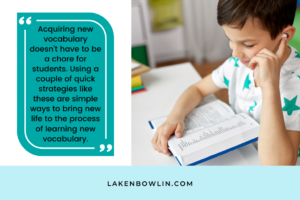
Acquiring new vocabulary doesn’t have to be a chore for students. Using a couple of quick strategies like these are simple ways to bring new life to the process of learning new vocabulary. I’m always looking for ways to spice up learning vocabulary, so if you have any other fun options feel free to share!
Did you miss it? It’s okay, I got you! I know you are overwhelmed with planning engaging lessons across all your subjects, so don’t make social studies become another pain point for you. Download your Social Studies Teacher Shortcut: A Year of Lessons in ½ the Time to get all your planning organized and in one place.
Related Articles
5 Activities for Using Task Cards During Your Social Studies Class
5 Tips for Teaching Current Events in Upper Elementary Classrooms
How to Use PowerPoint in the Classroom to Step Up Your Social Studies Lessons

